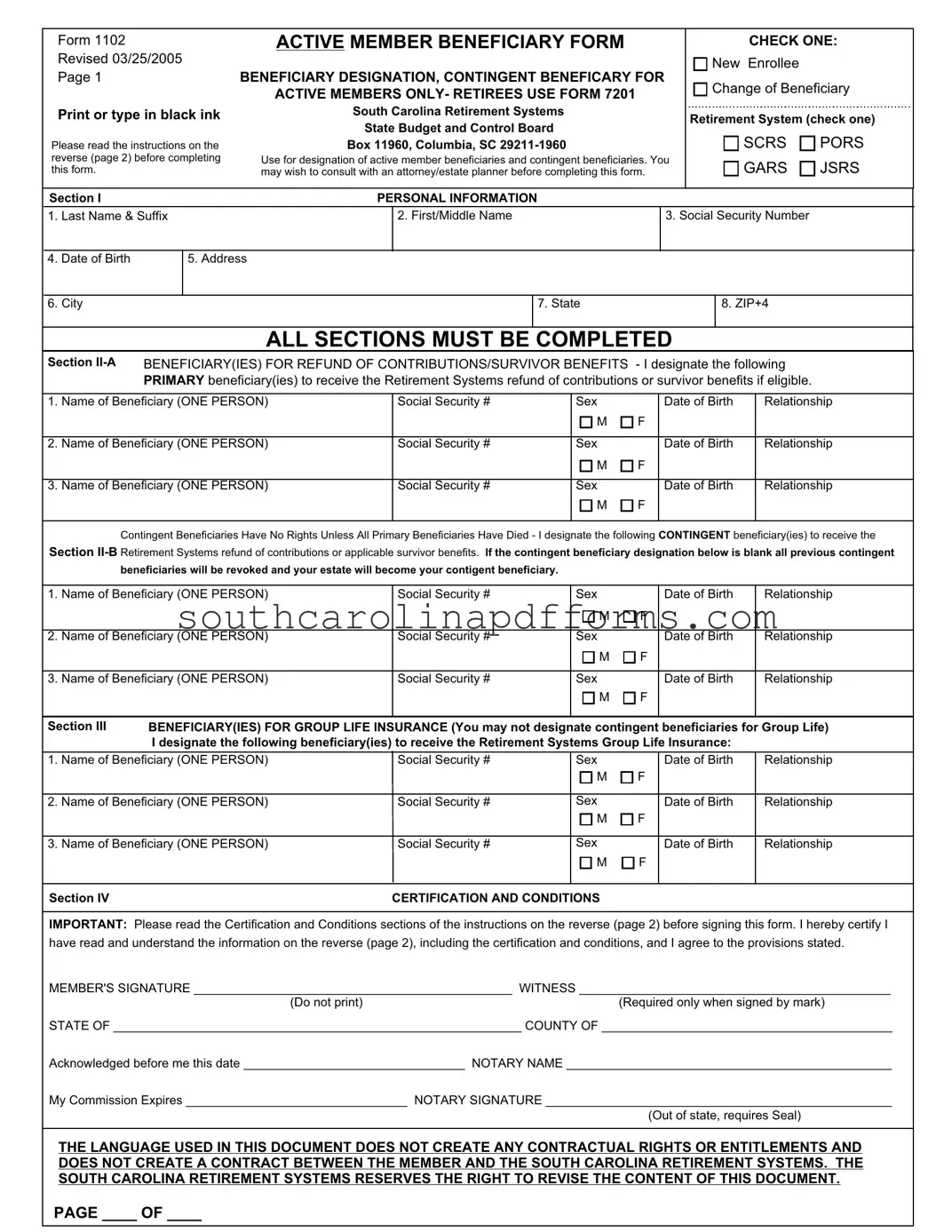The South Carolina 1102 form plays a crucial role for active members of the South Carolina Retirement Systems. This form is specifically designed for the designation of beneficiaries who may receive retirement contributions or survivor benefits in the event of the member's passing. It is essential for individuals to understand the implications of their beneficiary choices, as these decisions can significantly impact their loved ones' financial security. The form requires members to provide personal information, including their name, Social Security number, and date of birth, ensuring that the designated beneficiaries are accurately identified. Members can designate primary beneficiaries for the refund of contributions or survivor benefits, as well as contingent beneficiaries who will only receive benefits if all primary beneficiaries have predeceased the member. Additionally, the form includes a section for group life insurance beneficiaries, although contingent beneficiaries cannot be designated for this particular benefit. Completing the 1102 form is a thoughtful process that may benefit from consultation with an attorney or estate planner, ensuring that members fully understand their options and the ramifications of their designations. Each section must be completed thoroughly, and the form must be notarized to be valid. This attention to detail helps protect the member’s intentions and ensures that the benefits are distributed according to their wishes.
